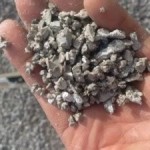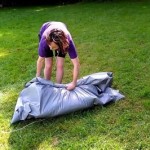What Is the Meaning of Mortar Bedding?
Mortar bedding refers to the practice of laying bricks, blocks, stones, and other masonry units on a bed of mortar. This mortar layer serves several crucial functions, contributing significantly to the structural integrity, stability, and longevity of the wall or structure being built. Proper mortar bedding is essential for evenly distributing loads, accommodating minor irregularities in the units, and creating a strong bond between individual elements.
The process typically involves spreading a consistent layer of mortar onto the surface below the unit being laid. The thickness of the mortar bed varies depending on the type of unit, the size of the joint, and the specific application. Typically, a mortar bed thickness of around 10-13mm is recommended for standard bricks. This allows for adequate adjustment and leveling of the unit while ensuring sufficient contact area for a strong bond.
Several types of mortar bedding techniques exist, each suited to different applications and offering specific advantages. Full mortar bedding involves completely filling the horizontal joint beneath the unit with mortar. This technique offers maximum load distribution and is often preferred for load-bearing walls. Face-shell bedding refers to applying mortar only to the face shells of the unit, leaving the core unfilled. This method can be used in situations where the core will later be filled with grout or insulation. Spot bedding, as the name suggests, involves placing small dabs of mortar at specific points on the unit. This technique is generally discouraged for structural applications due to the uneven load distribution it creates.
The composition of the mortar used in bedding also plays a critical role in the performance of the masonry structure. Mortar is typically composed of a mixture of cement, sand, and water. The specific proportions of these ingredients influence the mortar's workability, strength, and durability. Different types of mortar are available, each designed for specific applications. For example, Type N mortar is a general-purpose mortar suitable for most above-grade masonry applications. Type S mortar, on the other hand, offers higher compressive strength and is better suited for below-grade applications or structures subjected to higher loads.
The process of mortar bedding requires careful attention to detail and adherence to best practices. Before laying the mortar bed, the surface below should be clean and free of debris. The mortar should be mixed to the correct consistency – neither too wet nor too dry – to ensure proper workability and adhesion. The mortar bed should be spread evenly using a trowel, and the unit should be firmly pressed into the mortar bed to ensure a strong bond. Excess mortar squeezed out from the joints should be removed carefully.
Properly executed mortar bedding provides numerous benefits. It creates a strong and stable structure by evenly distributing loads across the masonry units. The mortar bed acts as a cushion, absorbing minor movements and preventing cracking due to thermal expansion and contraction or minor ground settlement. It also helps to seal the joints, preventing water penetration and protecting the structure from moisture damage. Furthermore, a well-executed mortar bed contributes to the aesthetic appeal of the finished masonry work.
Conversely, inadequate mortar bedding can lead to a range of problems. Insufficient mortar coverage can result in uneven load distribution, leading to cracking and structural instability. Poorly mixed mortar can weaken the bond between the units, compromising the strength of the structure. Excessive mortar thickness can create thick joints, which are aesthetically unpleasing and can also weaken the structure. Furthermore, improper tooling of the mortar joints can allow water to penetrate the wall, leading to moisture damage and deterioration.
Several factors influence the choice of mortar bedding technique and the type of mortar used. The type of masonry unit being used, the structural requirements of the wall, the exposure conditions, and the aesthetic considerations all play a role. For example, larger masonry units may require thicker mortar beds to accommodate their size and weight. Load-bearing walls require stronger mortar and more comprehensive bedding techniques than non-load-bearing walls. Structures exposed to harsh weather conditions may require the use of a more durable mortar.
In conclusion, understanding the principles of mortar bedding is crucial for anyone involved in masonry construction. Proper mortar bedding contributes significantly to the strength, stability, and durability of masonry structures. Careful attention to detail, adherence to best practices, and the selection of appropriate materials and techniques are essential for ensuring the long-term performance and aesthetic appeal of the finished work.

Bedding Mortar Sandberg

Laying Courses And Bedding Materials For Flags Slabs Pavingexpert

Masonry Mortar Types And Joints Archtoolbox
Bs 7533 Compliant Mortar Paving System

Laying Courses And Bedding Materials For Flags Slabs Pavingexpert

Masonry Mortar Types And Joints Archtoolbox

Setting Bed Spec Mix

Bedding Mortar Sandberg

Laying Courses And Bedding Materials For Flags Slabs Pavingexpert

The Difference Between Bedding And Pointing Vivify Roofing








